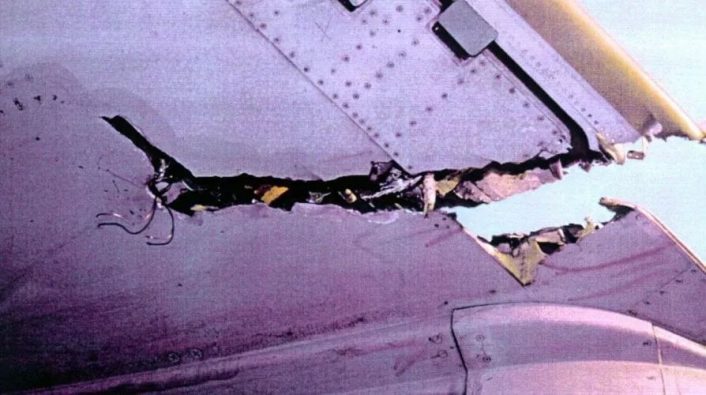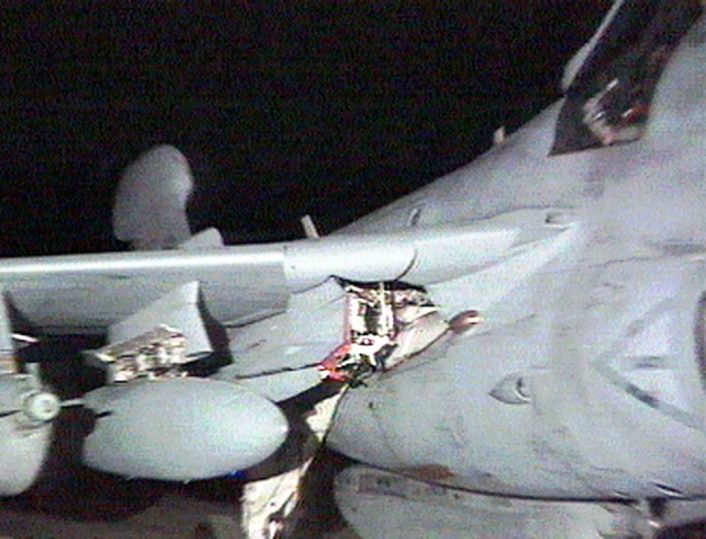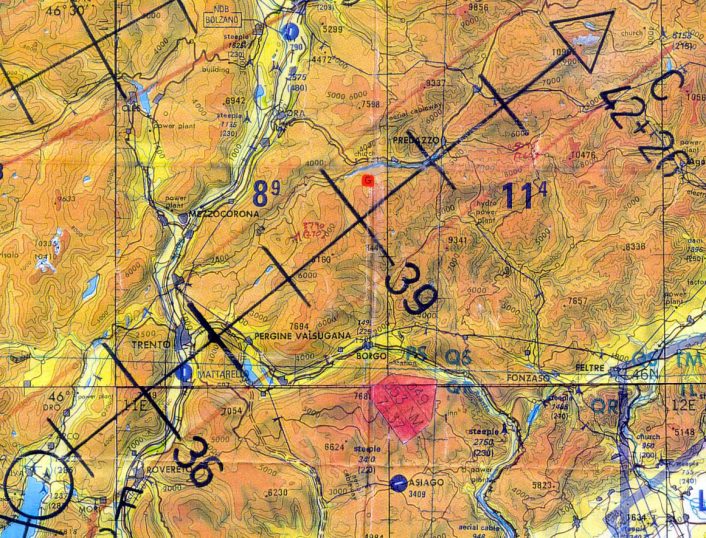On this day in 1998, 20 people lost their lives after a Prowler flying too low and against regulations, cut a cable supporting a cable car.
On Feb. 3, 1998, EA-6B Prowler #163045/CY-02, from VMAQ-2, deployed at Aviano AB, in northeastern Italy, for the Balkans crisis, using radio callsign “EASY 01” and flying a low level route, cut a cable supporting a cable car of an aerial lift, near Cavalese, a ski resort in the Dolomites. Twenty people died when the cabin plunged over 260 feet and crashed on the ground in what is also known as the “Cavalese cable car disaster” or “Strage del Cermis“.
At 15:13 LT, when it struck the cables supporting the cable car, the aircraft was flying at a speed of 540 miles per hour (870 km/h) and at an altitude of between 260 and 330 feet (80 and 100 m) in a narrow valley between the mountains.
While the aircraft had wing and tail damage, it was able to return to Aviano.

The subsequent investigation found that the EA-6B was flying too low and against regulations. Initially, all four men on the plane were charged, but only the pilot, Captain Richard J. Ashby, and his navigator, Captain Joseph Schweitzer, actually faced trial (that took place at Marine Corps Base Camp Lejeune, North Carolina), charged with twenty counts of involuntary manslaughter and negligent homicide. At the end of the first trial, the pilot was acquitted on all charges relating to the disaster (charges which were dropped for the navigator too) in a verdict that caused shock and resentment in Italy generating an upsurge of anti-American feeling.

During the trial it emerged that the U.S. Marine Corps aircrews used obsolete U.S. military maps that, unlike local ones, did not show the cables, and were not aware of altitude regulations concerning low level flying.
At the time, low level flying in the region could not take place below 2,000 feet; Ashby said he thought they were flying at 1,000 feet (he also said the altimeter did not properly work) although the cable was cut at a height of 360 feet. The aircrew was filming with a camera on the day of the disaster, but the videotape of the mission was destroyed after they returned to Aviano.
The two Marines were court-martialed a second time when it became evident they had destroyed the videotape filmed on the day of the incident. Eventually, Capt. Ashby and Schweitzer were found guilty in May 1999; both were dismissed from the service and Ashby received a six-month prison term. Families were eventually compensated 1.9M USD per victim.

As a consequence of the tragedy, the low-level flight was strongly criticized and some politicians called for a complete ban of low level flying. Although it was not banned, the rules changed and the low level flying permitted only inside specific unpopulated areas with a lower deck at 250 feet (later raised at 500 feet).









